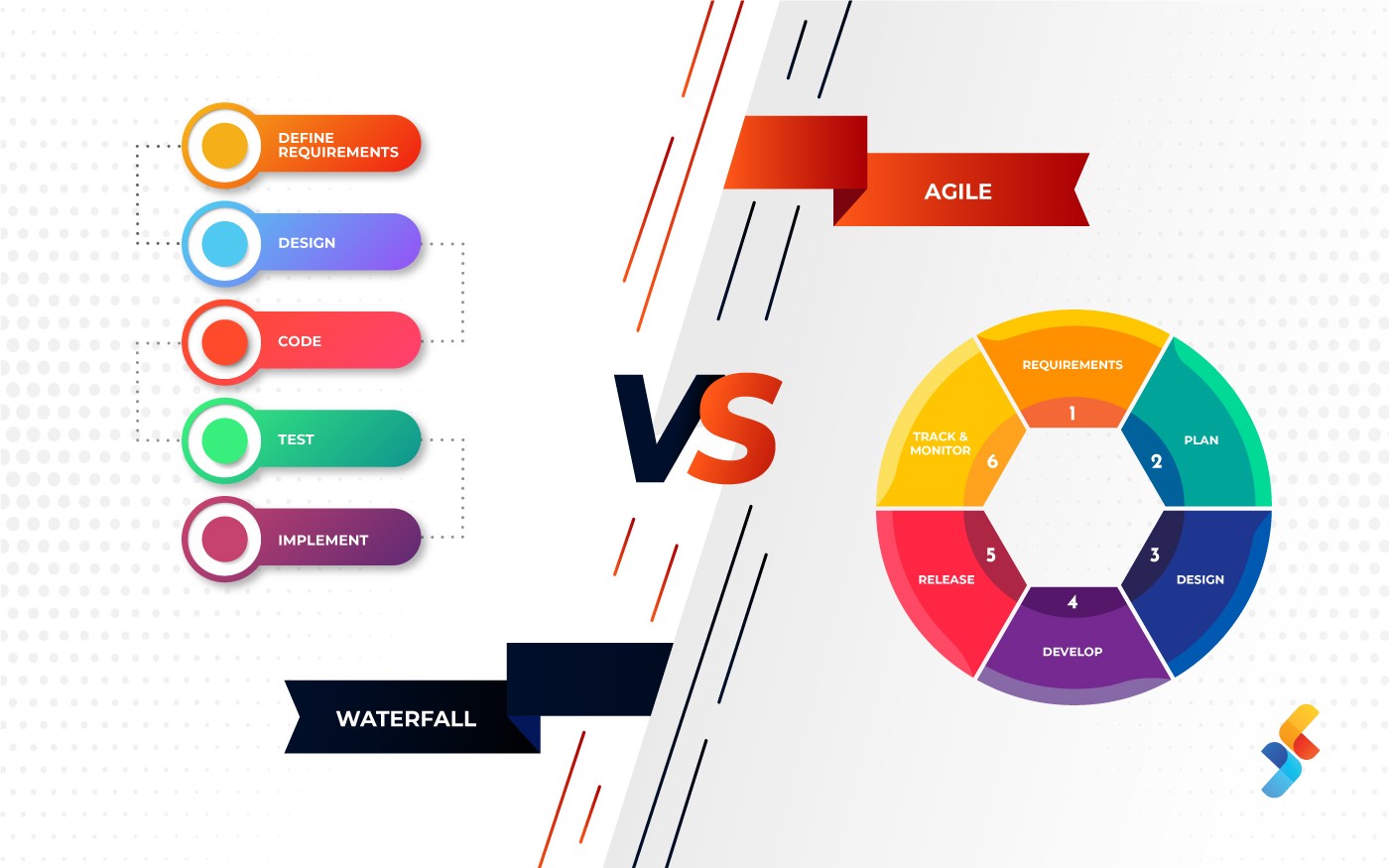Introduction
In the world of IT project management, selecting the right methodology is a critical decision that can impact the success of your project. Among the most popular approaches are the Agile methodology and Waterfall project management. Each has its own strengths and is suited for different types of projects. In this blog post, we will explore the key differences between Agile and Waterfall, their pros and cons, and help you determine which approach might be the best fit for your IT project planning needs.
What is Waterfall Project Management?
Waterfall project management is a traditional, linear approach where the project flows through defined phases, such as initiation, planning, execution, and closure, one after the other. Each phase must be completed before the next one begins, with little room for changes once the project has moved forward.
Key Features of Waterfall Project Management:
- Sequential Phases: Waterfall follows a strict sequence of phases, making it easy to track progress.
- Detailed Planning: All project requirements are gathered and documented at the beginning, providing a clear plan for each phase.
- Predictability: With a well-defined structure, Waterfall provides predictable timelines, making it suitable for projects where requirements are unlikely to change.
Benefits of Waterfall:
- Clear Documentation: Detailed planning and project documentation make it easy for all stakeholders to understand what needs to be delivered.
- Defined Scope: Waterfall works well for projects with fixed requirements, as it minimizes the risk of scope creep.
- Easier Management: Its linear approach makes it straightforward for project managers to monitor progress and manage dependencies.
Drawbacks of Waterfall:
- Limited Flexibility: Changes are difficult to implement once the project is in progress, making it unsuitable for projects with evolving requirements.
- Late Testing: Testing occurs towards the end of the project, which means errors or misalignments may only be discovered in the later phases, leading to costly corrections.
What is Agile Methodology?
The Agile methodology is an iterative approach that emphasizes flexibility, collaboration, and customer feedback. Agile breaks the project into smaller increments called iterations or sprints, allowing teams to adjust and adapt based on feedback and evolving requirements.
Key Features of Agile Methodology:
- Iterative Approach: Agile divides the project into smaller cycles, which are continuously planned, developed, and tested.
- Continuous Improvement: Each iteration is followed by reviews and feedback, allowing for continuous improvement throughout the project lifecycle.
- Team Collaboration: Agile emphasizes collaboration between cross-functional teams and continuous communication with stakeholders.
Benefits of Agile:
- Flexibility: Agile provides the ability to adapt to changing requirements, making it ideal for projects where priorities may shift.
- Customer-Centric: Regular feedback from stakeholders ensures that the final product meets their needs and expectations.
- Early Issue Identification: Testing and reviews are conducted throughout each iteration, which helps identify issues early and reduces the risk of significant problems at the end.
Drawbacks of Agile:
- Less Predictability: Due to its iterative nature, timelines and deliverables may change, making Agile less predictable compared to Waterfall.
- Resource Demands: Agile requires close collaboration, frequent meetings, and quick responses from stakeholders, which may be demanding for some teams.
- Not Ideal for Fixed-Requirement Projects: Projects that require a strict scope and fixed requirements may face challenges with Agile’s iterative, changing nature.
Agile vs. Waterfall: Key Differences
- Flexibility vs. Structure
- Waterfall follows a structured, linear approach, ideal for projects with well-defined requirements and minimal changes.
- Agile offers flexibility, allowing requirements to evolve and adapt throughout the project lifecycle.
- Customer Feedback
- Waterfall gathers customer feedback mainly during the planning and testing phases, making changes difficult once the project is underway.
- Agile involves customers at every stage, ensuring that the product meets their needs and allowing for ongoing adjustments.
- Project Scope
- Waterfall is suited for projects with a clearly defined scope that is unlikely to change.
- Agile is better for projects with evolving requirements and a need for constant adaptation.
- Team Collaboration
- Waterfall relies heavily on documentation, with team members often working independently based on their roles in each phase.
- Agile encourages collaboration, with daily meetings, teamwork, and shared responsibilities to keep everyone aligned.
Which Methodology is Right for Your IT Project?
Choosing between Agile methodology and Waterfall project management depends largely on the nature of your project and the needs of your stakeholders. Here are some guidelines to help you decide:
- Choose Waterfall If:
- Your project has fixed, well-defined requirements that are unlikely to change.
- Predictability and adherence to a set schedule are important for your stakeholders.
- You are working on a project that involves regulatory compliance or requires detailed documentation.
- Choose Agile If:
- The requirements are expected to evolve, and you need the flexibility to adapt as the project progresses.
- The end-user feedback is vital, and you want to make changes based on ongoing input.
- You are working with a cross-functional team that values collaboration, iteration, and a customer-focused approach.
Conclusion
Selecting the right methodology—Agile or Waterfall—is crucial for the success of your IT project planning. The Waterfall project management approach is suited for projects with a fixed scope, minimal changes, and a need for predictability. In contrast, the Agile methodology offers flexibility, adaptability, and a collaborative environment, making it ideal for projects with changing requirements and a focus on customer feedback.
By understanding the key differences between Agile and Waterfall, you can make an informed decision that aligns with your project goals, team capabilities, and stakeholder expectations.
Ready to choose the best approach for your IT project? Stay tuned for more insights on project management methodologies and how to deliver successful outcomes!
Keywords: Agile methodology, Waterfall project management, IT project planning.


